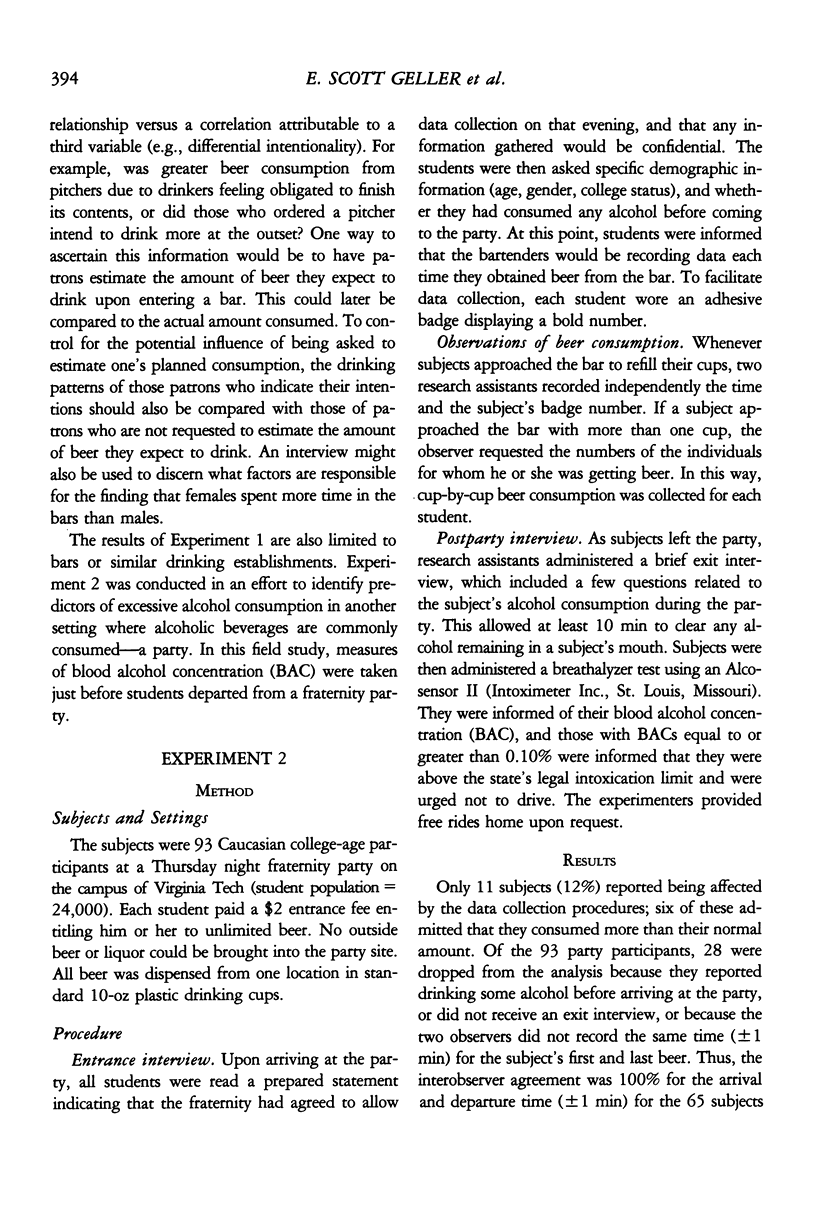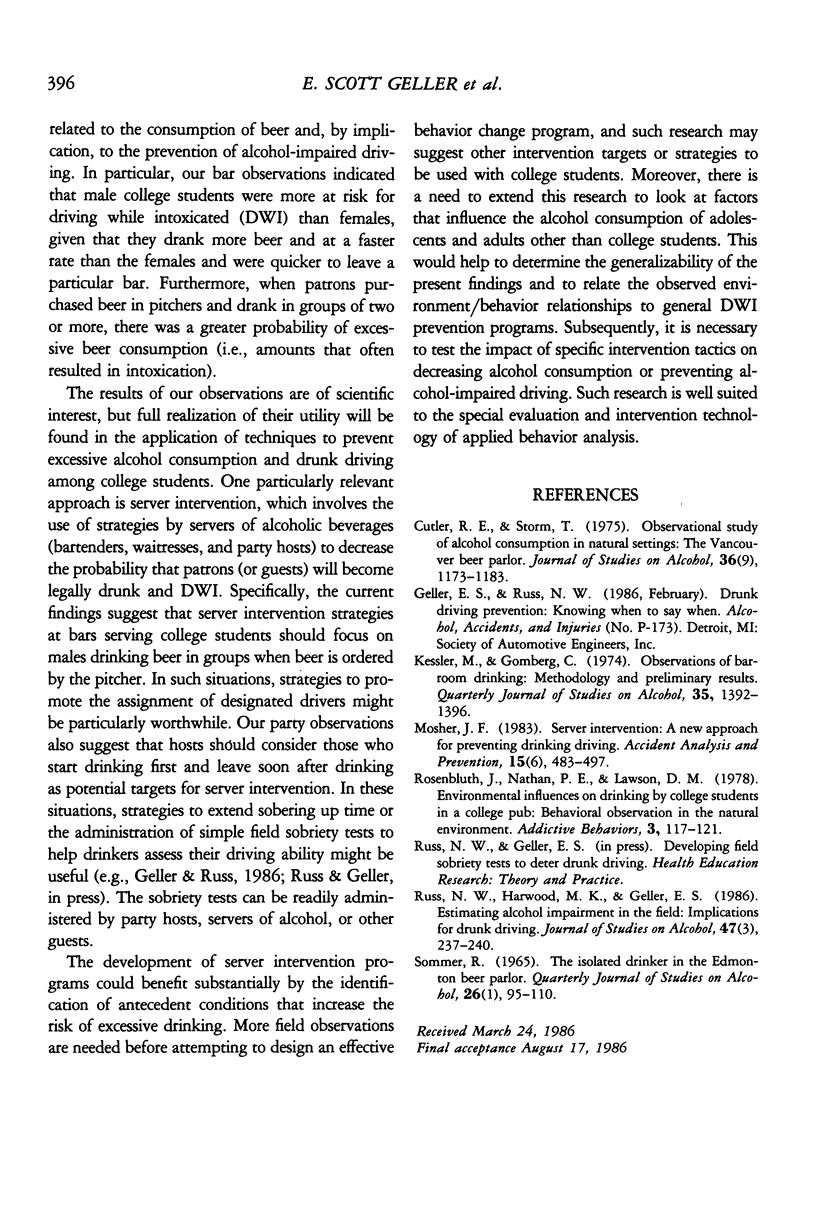Abstract
We observed the beer drinking behavior of 308 university students in several bar and party settings. The following relationships were found: males drinking beer in bars consumed 0.92 oz per min; females drank less beer than males, and stayed in a bar for a longer time period; patrons drank significantly more beer when drinking in groups and when purchasing beer in pitchers versus cups or bottles; and intervals between party arrival and first drink and between party departure and last drink varied inversely with blood alcohol concentration. We discuss these findings with regard to developing interventions to prevent alcohol-impaired driving.
Full text
PDF





Selected References
These references are in PubMed. This may not be the complete list of references from this article.
- Cutler R. E., Storm T. Observational study of alcohol consumption in natural settings. The Vancouver beer parlor. J Stud Alcohol. 1975 Sep;36(9):1173–1183. doi: 10.15288/jsa.1975.36.1173. [DOI] [PubMed] [Google Scholar]
- Kessler M., Gomberg C. Observations of barroom drinking; methodology and preliminary results. Q J Stud Alcohol. 1974 Dec;35(4):1392–1396. [PubMed] [Google Scholar]
- Rosenbluth J., Nathan P. E., Lawson D. M. Environmental influences on drinking by college students in a college pub: behavioral observation in the natural environment. Addict Behav. 1978;3(2):117–121. doi: 10.1016/0306-4603(78)90034-5. [DOI] [PubMed] [Google Scholar]
- Russ N. W., Harwood M. K., Geller E. S. Estimating alcohol impairment in the field: implications for drunken driving. J Stud Alcohol. 1986 May;47(3):237–240. doi: 10.15288/jsa.1986.47.237. [DOI] [PubMed] [Google Scholar]


